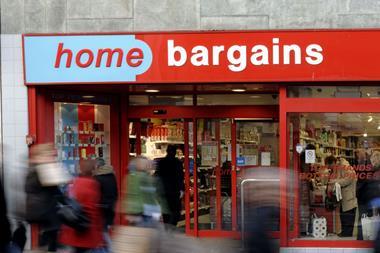Calling all fashionistas!
Lidl has created the must-have item for autumn-winter: its first branded handbag, in partnership with US designer Nik Bentel. The soft leather accessory resembles a brown paper bakery bag with a window. Inside the £50 limited-edition item is a croissant-shaped purse, which sports a golden trolley coin as a zip pull. Très chic!
OK, it may be an item better suited to the middle aisle than Vogue’s pages. But supermarket fashion is increasingly encroaching on the latter.
That much is proven by Marks & Spencer, whose Sienna Miller collection graced the editorial of the fashion bible earlier this year. Buoyed by that success, M&S is now planning to open its first clothes-only store. The retailer will trial the standalone boutique later this year at Battersea Power Station in south London, it revealed this weekend.
The vote of confidence reflects soaring demand for M&S lingerie and knitwear, which have put paid to several years of patchy clothing sales.
That patchiness was largely due to the dowdy reputation of M&S compared to online purveyors of fast fashion, or even other high street names. In September 2019, then CEO Steve Rowe himself admitted the retailer had a reputation for “frumpiness”.
Back then, it had only just recruited womenswear director Maddy Evans from Topshop. Her impact since has been palpable. As demonstrated by the Miller tie-up, M&S gear – particularly womenswear – is now frequently on-trend or even fashion-forward.
Indeed, M&S’s style renaissance has been driven by Gen Z shoppers, a demographic that would have steered well clear of the M&S clobber of yesteryear.
It may seem like the last retailer one would associate with Generation Boohoo. But on closer scrutiny, the appeal to this younger cohort makes sense. After all, Marks’ gear can be very affordable. Dress prices, for example, are as low as £17.50 online. Men’s trousers start at £11. Kids’ shoes are as little as £7. Those are some keen deals for a demographic that demands bang for its buck.
And given how so many younger shoppers are green-minded, the quality and durability of M&S clothing almost certainly appeals over the flimsier fast fashion sold by many of the big name online boutiques. Indeed, “fast fashion clothes are produced in high volume, which means a high cost to the planet: 10% of global CO2 emissions are caused by the textile industry”, according to Oxfam.
Further, Gen Z are a very online bunch. Which also suits M&S. Its app is excellent. Not only is it very navigable, it’s also rich with add-ons, such as styling tips for your body shape and suggestions of complete get-ups for all types of occasions. It makes click & collect clothes shopping something of a pleasure.
It’s an outfit that could certainly help drive London’s young fashionistas to Battersea in droves.

























No comments yet